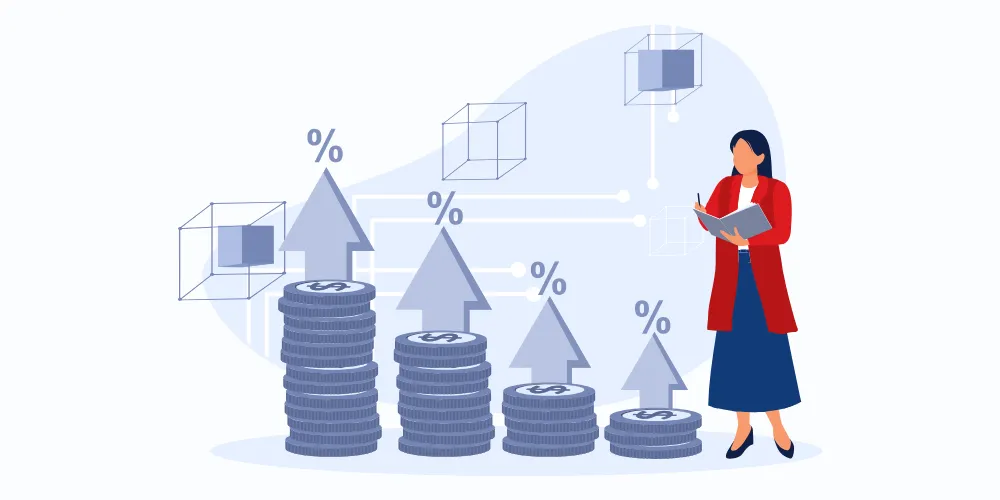Common annual bonus structures include performance-based bonuses, profit-sharing, milestone-based bonuses, and discretionary bonuses. These plans vary based on company size, industry, and goals. Each structure is designed to reward employees based on specific achievements—either individual, team, or company-wide—helping to align compensation with performance and business success.
Understanding Different Annual Bonus Structures
- Sumeet Shah
- Apr 05, 2025
- 4 min read
- Last updated on Nov 07, 2025
Introduction to Annual Bonuses
In the corporate world, the term annual bonus is often tossed around with much anticipation and speculation. But what exactly does it mean? In simple terms, an annual bonus is a sum of money awarded to employees at the end of the year as a reward for their contributions and performance. The annual bonus's meaning extends beyond mere monetary benefit; it signifies appreciation and recognition, serving as an incentive to boost productivity and align employees with the company’s goals.
Importance of Annual Bonus in Employee Motivation
An annual bonus can be a powerful tool in fostering employee motivation and satisfaction. It acts as a tangible acknowledgment of an employee's efforts, encouraging further productivity and engagement. Companies often view annual bonuses as investments in their workforce, fostering a positive work environment that reduces turnover and helps retain top talent. Through these bonuses, the workforce feels valued and becomes more committed to their roles, ultimately leading to improved business performance.
Different Types of Annual Bonus Structures
Organizations tailor their annual bonus structures to suit their unique objectives and industry standards. There are various types of bonus structures in place, each designed to motivate employees in different ways. For instance, discretionary bonuses offer flexibility, allowing companies to reward outstanding individual or team achievements. On the other hand, formula-based bonuses tie rewards strictly to predefined performance metrics, ensuring fairness and transparency in distribution.
Typical Bonus Structure Examples
To understand how these structures translate into real-world applications, let's explore some annual bonus structure examples. A typical bonus structure might include profit sharing, in which bonuses are determined by the company's profits, encouraging employees to act in the organization's best interests. Another example is the individual performance-based bonus, which directly links the payout to an employee's personal achievements, motivating them to strive for excellence.
Factors Influencing Annual Bonus Structure
Several factors, including economic conditions, industry standards, and organizational goals, influence the design of an annual bonus structure. Economic trends can determine whether a company can afford generosity. At the same time, the nature of specific roles may require tailored incentives to attract and retain talent. Business performance, strategic priorities, and the need for a competitive advantage also shape the bonus structure.
Payment of Annual Bonus Based on Performance
Often, paying an annual bonus based on performance is a common practice among organizations. This aligns individuals' efforts with corporate success, creating a performance-driven culture. Metrics such as sales targets, customer satisfaction levels, and project completions can serve as benchmarks to determine bonus eligibility and size, ensuring that employees are rewarded fairly for their contributions.
Pros and Cons of Different Bonus Structures
Analyzing the types of bonus structures reveals both strengths and limitations. Formula-based bonuses promote transparency and impartiality but may lack the flexibility to recognize unique contributions. Discretionary bonuses, while flexible, could be perceived as subjective if not managed carefully. Profit-sharing encourages long-term thinking but may not appeal to those who are short-term focused and prioritize immediate rewards.
Conclusion
Choosing the right annual bonus structure is crucial for encouraging employee satisfaction and achieving business objectives. Each organization must consider its own unique circumstances and values when designing its bonus plan. With thoughtful design, the annual bonus can be a powerful component of a rewarding employee experience, aligning personal achievements with corporate success.
Frequently Asked Questions
What are the most common types of annual bonus structures?
How do performance-based bonuses work?
Performance-based bonuses reward employees based on how well they achieve predefined goals or key performance indicators (KPIs). These may include sales targets, project completions, or quality benchmarks. This structure promotes accountability and drives motivation, as employees clearly understand the connection between their performance and the annual financial rewards they can expect.
What is a profit-sharing bonus plan?
A profit-sharing bonus distributes a portion of a company’s profits among eligible employees. These bonuses aren’t directly tied to individual performance but reflect overall business success. This model fosters a sense of ownership and team spirit, motivating employees to work together toward the company’s financial health and growth.
How should companies choose the right bonus structure?
Companies should consider their business objectives, financial capacity, workforce roles, and company culture. For example, sales teams may benefit from performance-based bonuses, while startups might prefer milestone bonuses. The right structure should strike a balance between fairness, motivation, and sustainability, aligning with both employee expectations and organizational goals.




